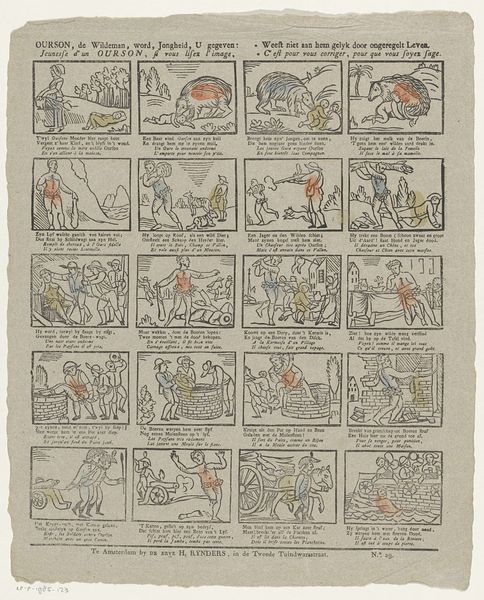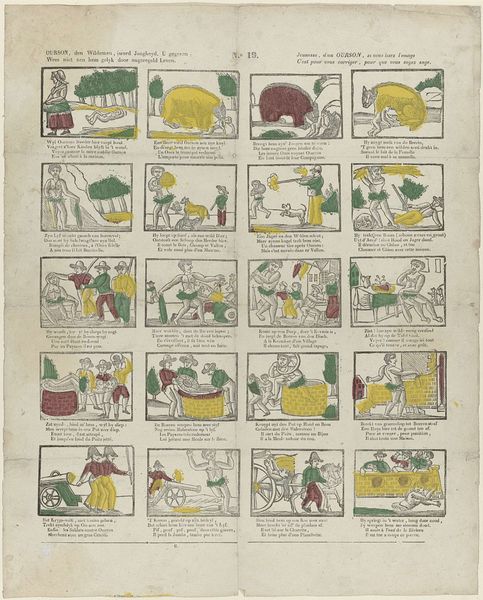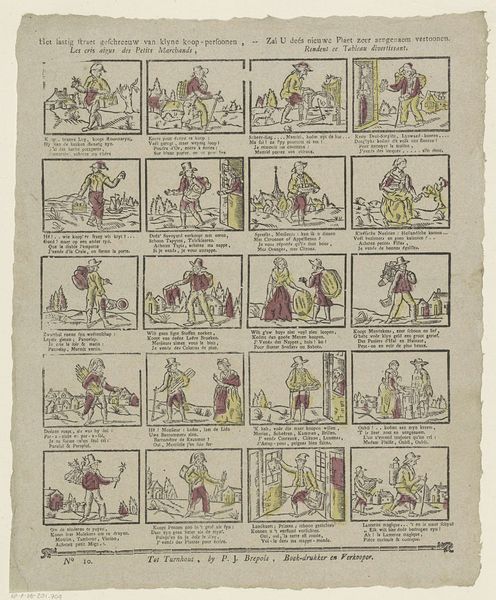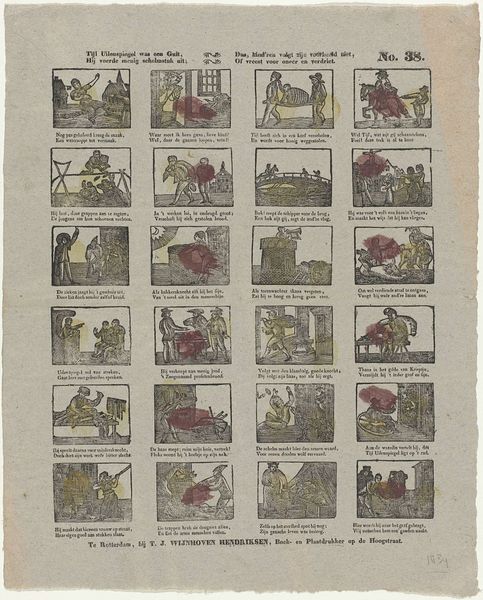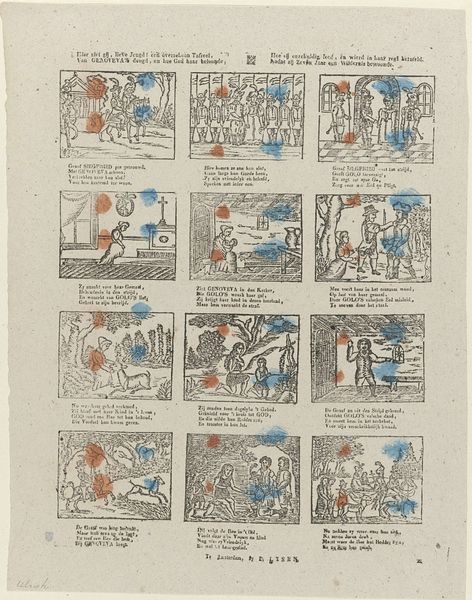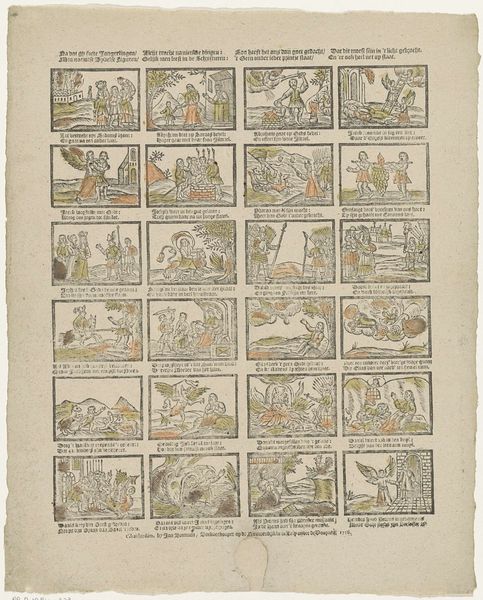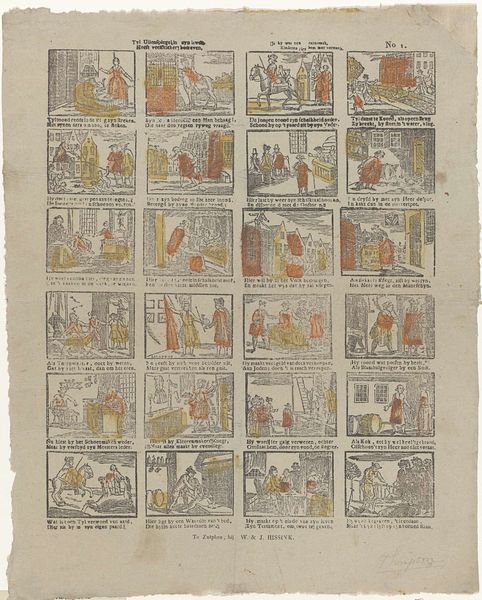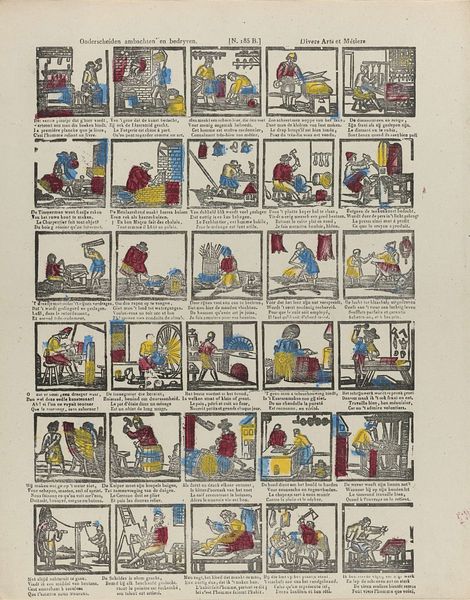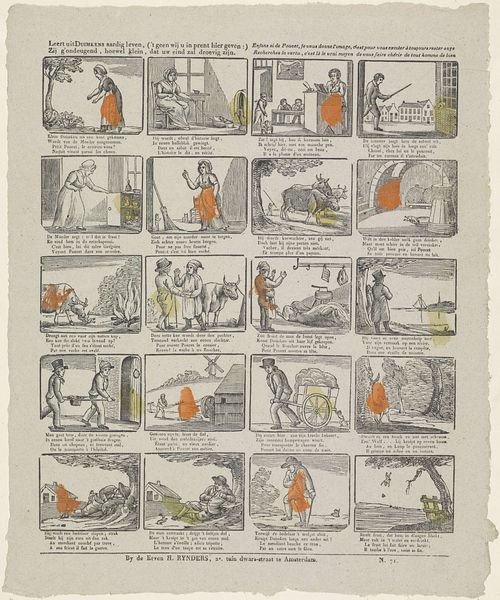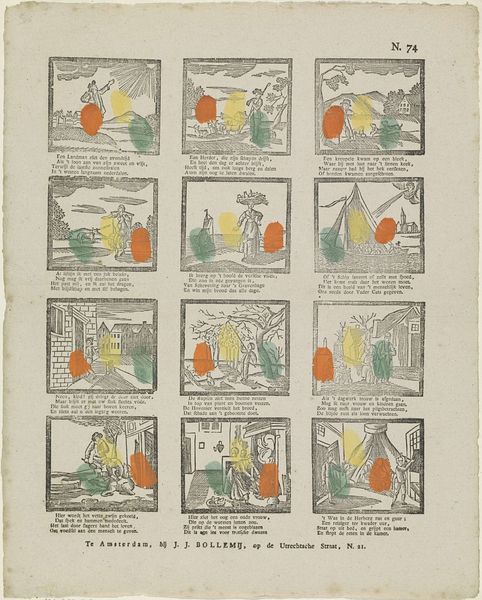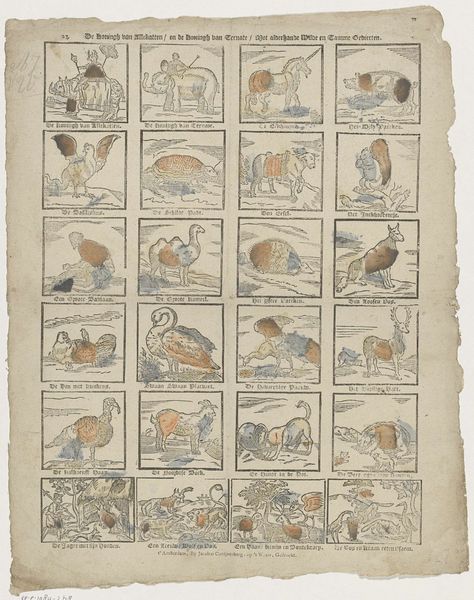
Jongens wild gy vreugd vermeeren / Zo wild ras dees spreuken leeren 1787 - 1822
0:00
0:00
drawing, print, paper, engraving
#
drawing
#
narrative-art
# print
#
paper
#
genre-painting
#
engraving
Dimensions: height 371 mm, width 290 mm
Copyright: Rijks Museum: Open Domain
Curator: Here we have a fascinating print titled "Jongens wild gy vreugd vermeeren / Zo wild ras dees spreuken leeren." Created sometime between 1787 and 1822 by Jan Hendrik de Lange. It's an engraving on paper, currently held in the Rijksmuseum. Editor: It's giving me a vintage comic strip vibe, only instead of superheroes we have…well, I’m not entirely sure what we have yet, but it seems didactic. Curator: Precisely! This work falls into the category of narrative art, common during that period. Think of it as an illustrated moral lesson targeted towards young people. The title translates to something like "Boys, if you wish to increase joy, quickly learn these sayings." Editor: So, an early form of behavior modification through visual storytelling? I’m curious, what's the significance of the recurring imagery in each little frame, especially those rectangular, brownish red blotches? Curator: Those rectangles that you see are really the binding agent to link the frames with moral sayings. I can agree that its function here seems very clearly connected with commerce and industry, maybe promoting particular commodities as the way toward pleasure. Also the composition does lend itself to broader consideration of the rise of capitalist culture, where discipline, morality, and labor are being visually intertwined in printed mass production. Editor: That’s fascinating. Given the time period, it really feels like an attempt to instill bourgeois values… hard work equals reward, all packaged neatly in a charming, digestible format. The layout reinforces that sense of order, doesn't it? Curator: Indeed. And let’s not overlook the artist, Jan Hendrik de Lange, identified as a 'Bookprinter and Seller' on the inscription at the bottom of the page, connecting him directly with the commercial function of this piece. Editor: So much information packed into a seemingly simple engraving! The social commentary almost jumps out. Curator: Precisely, this artwork encourages us to reconsider how these notions intersect within art history. It prompts conversations around themes of class, aspiration, and power dynamics prevalent in 18th- and early 19th-century Dutch society. Editor: Looking closely, I think I see more layers of meaning here now.
Comments
No comments
Be the first to comment and join the conversation on the ultimate creative platform.
